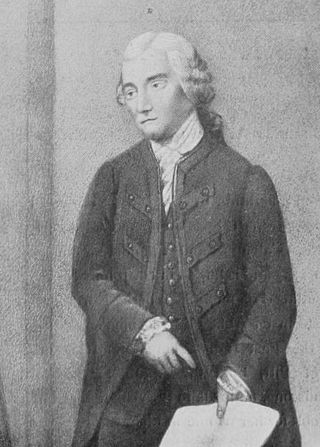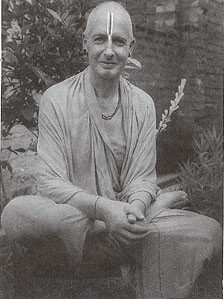Related Research Articles

John Zephaniah Holwell was a surgeon, an employee of the British East India Company, and a temporary Governor of Bengal (1760). He was also one of the first Europeans to study Indian antiquities and was an early advocate of animal rights and vegetarianism.

Population figures for the Indigenous peoples of the Americas prior to European colonization have been difficult to establish. By the end of the 20th century, most scholars gravitated toward an estimate of around 50 million, with some historians arguing for an estimate of 100 million or more.
Indian mathematics emerged in the Indian subcontinent from 1200 BCE until the end of the 18th century. In the classical period of Indian mathematics, important contributions were made by scholars like Aryabhata, Brahmagupta, Bhaskara II, and Varāhamihira. The decimal number system in use today was first recorded in Indian mathematics. Indian mathematicians made early contributions to the study of the concept of zero as a number, negative numbers, arithmetic, and algebra. In addition, trigonometry was further advanced in India, and, in particular, the modern definitions of sine and cosine were developed there. These mathematical concepts were transmitted to the Middle East, China, and Europe and led to further developments that now form the foundations of many areas of mathematics.

Vidyaranya, usually identified with Mādhavācārya, was the jagadguru of the Sringeri Sharada Peetham from ca. 1374–1380 until 1386 - according to tradition, after ordination at an old age, he took the name of Vidyaranya, and became the Jagadguru of this Matha at Sringeri.

Raja Sir Tanjore Madhava Rao, KCSI, also known as Sir Madhava Rao Thanjavurkar or simply as Madhavarao Tanjorkar, was an Indian statesman, civil servant, administrator and politician who served as the Diwan of Travancore from 1857 to 1872, Indore from 1873 to 1875 and Baroda from 1875 to 1882. He was the nephew and son of the former Travancore Diwans T. Venkata Rao and T. Ranga Rao.
Mādhava of Sangamagrāma (Mādhavan) was an Indian mathematician and astronomer who is considered as the founder of the Kerala school of astronomy and mathematics in the Late Middle Ages. Madhava made pioneering contributions to the study of infinite series, calculus, trigonometry, geometry, and algebra. He was the first to use infinite series approximations for a range of trigonometric functions, which has been called the "decisive step onward from the finite procedures of ancient mathematics to treat their limit-passage to infinity".
Jyeṣṭhadeva was an astronomer-mathematician of the Kerala school of astronomy and mathematics founded by Madhava of Sangamagrama. He is best known as the author of Yuktibhāṣā, a commentary in Malayalam of Tantrasamgraha by Nilakantha Somayaji (1444–1544). In Yuktibhāṣā, Jyeṣṭhadeva had given complete proofs and rationale of the statements in Tantrasamgraha. This was unusual for traditional Indian mathematicians of the time. The Yuktibhāṣā is now believed to contain the essential elements of calculus like Taylor and infinity series. Jyeṣṭhadeva also authored Drk-karana, a treatise on astronomical observations.

The Kerala school of astronomy and mathematics or the Kerala school was a school of mathematics and astronomy founded by Madhava of Sangamagrama in Tirur, Malappuram, Kerala, India, which included among its members: Parameshvara, Neelakanta Somayaji, Jyeshtadeva, Achyuta Pisharati, Melpathur Narayana Bhattathiri and Achyuta Panikkar. The school flourished between the 14th and 16th centuries and its original discoveries seem to have ended with Narayana Bhattathiri (1559–1632). In attempting to solve astronomical problems, the Kerala school independently discovered a number of important mathematical concepts. Their most important results—series expansion for trigonometric functions—were described in Sanskrit verse in a book by Neelakanta called Tantrasangraha, and again in a commentary on this work, called Tantrasangraha-vakhya, of unknown authorship. The theorems were stated without proof, but proofs for the series for sine, cosine, and inverse tangent were provided a century later in the work Yuktibhasa, written in Malayalam, by Jyesthadeva, and also in a commentary on Tantrasangraha.

The Vishnukundina dynasty was an Indian dynasty based in Deccan, which ruled territory comprising present-day Andhra Pradesh, Telangana, Odisha and other parts of southern India during the 5th and 7th centuries, carving land out from the Vakataka Empire. It played an important role in the history of the Deccan during the 5th and 7th centuries. The dynasty initially ruled from Indrapalanagara, and later shifted to Denduluru, and Amaravathi.

Yuktibhāṣā, also known as Gaṇita-yukti-bhāṣā and Gaṇitanyāyasaṅgraha, is a major treatise on mathematics and astronomy, written by the Indian astronomer Jyesthadeva of the Kerala school of mathematics around 1530. The treatise, written in Malayalam, is a consolidation of the discoveries by Madhava of Sangamagrama, Nilakantha Somayaji, Parameshvara, Jyeshtadeva, Achyuta Pisharati, and other astronomer-mathematicians of the Kerala school. It also exists in a Sanskrit version, with unclear author and date, composed as a rough translation of the Malayalam original.
The 1837 Great Plains smallpox epidemic spanned 1836 through 1840 but reached its height after the spring of 1837, when an American Fur Company steamboat, the SS St. Peter, carried infected people and supplies up the Missouri River in the Midwestern United States. The disease spread rapidly to indigenous populations with no natural immunity, causing widespread illness and death across the Great Plains, especially in the Upper Missouri River watershed. More than 17,000 Indigenous people died along the Missouri River alone, with some bands becoming nearly extinct.

Mirtola is a village 10 km away from Almora, in Uttarakhand state in India. It is best known for an ashram by the same name, also called Uttar Brindaban, set up by Sri Yashoda Ma, a housewife turned ascetic in the 1930, along with her disciple Sri Krishna Prem (1898–1965), a mystic of the 20th Century. The ashram was later run by his disciple, Sri Madhava Ashish (1920–1997), another Briton, who also later settled in India.

Smallpox was an infectious disease caused by variola virus, which belongs to the genus Orthopoxvirus. The last naturally occurring case was diagnosed in October 1977, and the World Health Organization (WHO) certified the global eradication of the disease in 1980, making smallpox the only human disease to have been eradicated to date.
The history of smallpox extends into pre-history. Genetic evidence suggests that the smallpox virus emerged 3,000 to 4,000 years ago. Prior to that, similar ancestral viruses circulated, but possibly only in other mammals, and possibly with different symptoms. Only a few written reports dating from about 500 AD to 1000 AD are considered reliable historical descriptions of smallpox, so understanding of the disease prior to that has relied on genetics and archaeology. However, during the 2nd millennium AD, especially starting in the 16th century, reliable written reports become more common. The earliest physical evidence of smallpox is found in the Egyptian mummies of people who died some 3,000 years ago. Smallpox has had a major impact on world history, not least because indigenous populations of regions where smallpox was non-native, such as the Americas and Australia, were rapidly and greatly reduced by smallpox during periods of initial foreign contact, which helped pave the way for conquest and colonization. During the 18th century the disease killed an estimated 400,000 Europeans each year, including five reigning monarchs, and was responsible for a third of all blindness. Between 20 and 60% of all those infected—and over 80% of infected children—died from the disease.

Deva Dynasty was a Bengali Hindu Kayastha dynasty which originated in the Bengal region of the Indian subcontinent; the dynasty ruled over eastern Bengal after the Sena dynasty. The capital of the dynasty was Bikrampur in present-day Munshiganj District of Bangladesh.
Chandravākyas are a collection of numbers, arranged in the form of a list, related to the motion of the Moon in its orbit around the Earth. These numbers are couched in the katapayadi system of representation of numbers and so apparently appear like a list of words, or phrases or short sentences written in Sanskrit and hence the terminology Chandravākyas. In Sanskrit, Chandra is the Moon and vākya means a sentence. The term Chandravākyas could thus be translated as Moon-sentences.
Panchadasi or Panchadashi is a simple yet comprehensive manual of Advaita Vedanta written in the fourteenth century CE (1386-1391) by Vidyaranya, previously known as Madhavacharya.

Ronald Henry Nixon, later known as Sri Krishna Prem, was a British spiritual aspirant who went to India in the early 20th century. Together with his spiritual teacher Sri Yashoda Mai, he founded an ashram at Mirtola, near Almora, India. He was one of the first Europeans to pursue Vaishnavite Hinduism, and was highly regarded, with many Indian disciples. Later, according to the account of his foremost disciple Sri Madhava Ashish, Krishna Prem transcended the dogmas and practices of the Gaudiya Vaishnava tradition into which he had been initiated and affirmed a universal spiritual path shorn of "orthodoxy" and blind traditionalism.
Inoculation is the act of implanting a pathogen or other microbe or virus into a person or other organism. It is a method of artificially inducing immunity against various infectious diseases. The term "inoculation" is also used more generally to refer to intentionally depositing microbes into any growth medium, as into a Petri dish used to culture the microbe, or into food ingredients for making cultured foods such as yoghurt and fermented beverages such as beer and wine. This article is primarily about the use of inoculation for producing immunity against infection. Inoculation has been used to eradicate smallpox and to markedly reduce other infectious diseases such as polio. Although the terms "inoculation", "vaccination", and "immunization" are often used interchangeably, there are important differences. Inoculation is the act of implanting a pathogen or microbe into a person or other recipient; vaccination is the act of implanting or giving someone a vaccine specifically; and immunization is the development of disease resistance that results from the immune system's response to a vaccine or natural infection.
Sarva-darśana-saṃgraha is a philosophical text by the 14th-century Indian scholar Mādhavāchārya. In the book, Mādhavāchārya reviews the sixteen philosophical systems current in India at the time, and gives what appeared to him to be their most important tenets, and the principal arguments by which their followers endeavoured to maintain them. Mādhavāchārya is usually identified with Vidyaranya, the Jagadguru of the Śringeri Śarada Pītham from ca. 1374-1380 until 1386. However, this has been contested by various scholars.
References
- ↑ Hopkins, Donald R. (2002). The Greatest Killer: Smallpox in History. p. 140. ISBN 9780226351681.
- ↑ Nicholas, Ralph W. (2003). Fruits of Worship: Practical Religion in Bengal. Orient Blackswan. pp. 173–174. ISBN 9788180280061.
- ↑ Rao, Ramachandra S.K. (2005). Encyclopaedia of Indian Medicine: historical perspective, Volume 1 (2 ed.). Popular Prakashan. pp. 69–70. ISBN 9788171542550.